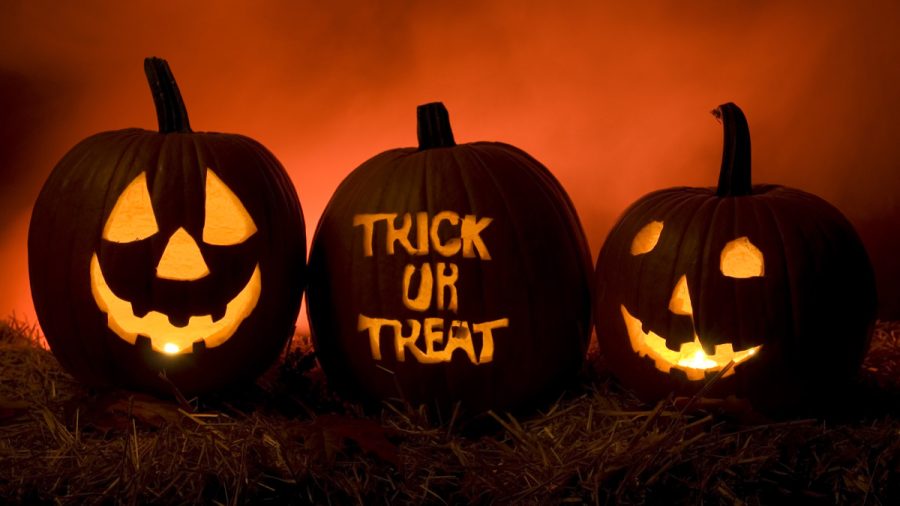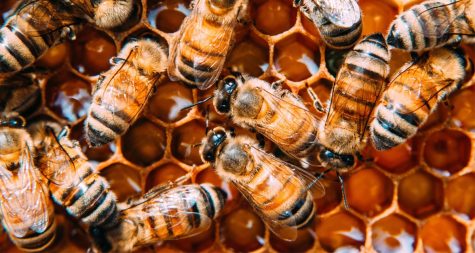Halloween: The History Behind This Spooky Holiday
As the air starts to cool off and the leaves start to fall, little signs of a certain upcoming holiday start to pop up. From costumes and candy to ghosts and ghouls, people around the globe prepare to celebrate Halloween, or their culture’s variation of the holiday. Whether that’s Halloween itself, Día de los Muertos, or Teng Chiah, everyone is celebrating autumn and the dead. But how exactly did it become a tradition to tell ghost stories, light bonfires, and dress up as a favorite character to ask for candy at a neighbor’s house? A description of the ways that Halloween is celebrated sounds almost bizarre, yet it is huge around the world. Of the many people celebrating, few people know the fascinating history behind the holiday that has been molded by different cultures for roughly 2,000 years.
Halloween started as a Celtic holiday called Samhain, which took place on the night of October 31. Samhain marked the beginning of winter and was celebrated with huge bonfires and animal sacrifices. The invasion of the Romans led to new changes in the holiday though, including the creation of All Saint’s Day. Although this day was originally in May, it was changed to November 1. All Saint’s Day is a Christian holiday that recognizes the various saints and martyrs and was celebrated similarly to Samhain. Eventually, All Saint’s Day became synonymous with All Hallows, a term which comes from a Middle English term that means All Saint’s Day. During the early 1900s, Halloween began to grow as a holiday in the United States. Although it started out as a night of vandalism and crime, the end of World War II helped cause its popularity as an innocent holiday to grow, leaving us with Halloween as we know it. In addition to this story, the traditions of Halloween, like wearing costumes, pumpkin carving, or trick-or-treating also all have unique origins.
The original Halloween costumes were not costumes at all, but rather a disguise that consisted of ash from one of the large bonfires of a Samhain celebration. Celts would smear ash on their face to hide themselves from souls they had wronged who passed over into their world. This was called “guising,” but over time, people switched to masks, and eventually into costumes. Like today, some costumes were of angels and devils, although there were significantly less miniature Elsas and Batmans running around. Like today’s Halloween, people would go door to door asking for food, although the details were a little different.
In the United States, parents send their children around the block and remind them to greet each neighbor with the phrase “trick or treat!” Although the phrase trick-or-treat is new, having been popularized in the mid to late 1900s, the act itself dates back to All Soul’s Day, a holiday that celebrated the souls of deceased loved ones. The idea of going door to door started as an All Soul’s Day tradition, although the goal behind it was different in different locations. In the Celtic region, poorer people would go to the houses of wealthier people and would collect food and drink in exchange for the promise to pray for the souls of the wealthier person’s loved ones. In the modern-day United Kingdom, children would perform dances or tell jokes in exchange for treats from their neighbors.
Finally, a less common tradition that has perhaps the most interesting backstory is the Halloween bonfire. Although a bonfire is not typically the biggest event of the holiday these days, it has greatly influenced Halloween traditions. The bonfire came from two different events: the Samhain bonfires and Guy Fawkes Day. The original Guy Fawkes Day was celebrated in the 1600s after the arrest of Guy Fawkes, a man involved in a Catholic attempt to overthrow the English King James I, a Protestant. Celebrated on November 5, many British people burn effigies of Guy Fawkes in huge bonfires. The tradition was popularized in the United States due to many Irish and Scottish immigrants who celebrated it, leading to today’s Halloween bonfire.
Whether you think Halloween is the worst holiday to exist or you think Halloween could not be greater, make sure to at least have a little fun. Go trick-or-treating with a sibling or friends, thank Guy Fawkes while basking in the warmth of a bonfire, or dress up to go to a costume party. Of course, be glad that you get to carve pumpkins instead of turnips (fun fact: Jack-o’-lanterns were originally carved in turnips). Most importantly, remember that you get to be a part of a tradition older than the Romans, and that is pretty cool.







